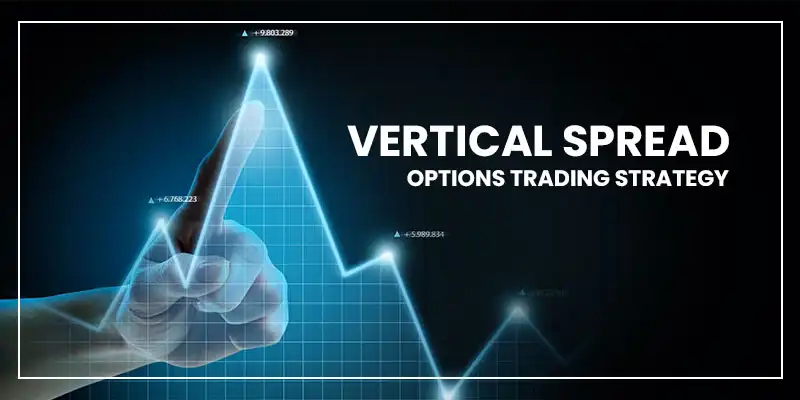A vertical spread option trading strategy is an approach that involves the simultaneous purchase and sale of options that share the same expiration date but differ in strike prices. This method involves using either calls or puts to create a structured position where potential gains and losses are predefined. It is used for educational illustration of risk-defined option positions and does not imply any guaranteed market outcome. The strategy is designed with specific parameters that allow traders to measure potential outcomes quantitatively based on the difference in strike prices.
Contents
- Definition and Structure
- Construction and Types
- Mechanism of Operation
- Considerations and Risk Management
- Conclusion
- FAQs
Definition and Structure
In vertical spreads, traders open two positions concurrently. One option is purchased while another is sold, with both contracts expiring on the same date. The strike price difference between these options delineates the profit potential and risk of the spread.
There are no guarantees regarding performance. Instead, the positions are constructed with predetermined exposure levels defining the possible outcomes. The limited risk profile emerges from the fixed difference between the strike prices, establishing a straightforward assessment framework through predetermined quantitative measures.
Note: The information provided here is intended to describe general construction for educational purposes and does not serve as a recommendation to initiate positions.
Read Also: The Mechanics Of Options Settlement
Construction and Types
Vertical spreads are primarily categorized into debit spreads and credit spreads. With debit spreads, the trader incurs a net cost when establishing the position, as the price paid for the purchased option exceeds the premium received from the option sold. Conversely, credit spreads yield a net premium receipt because the sold option commands a higher premium than the purchased option.
In educational discussions, the choice between call and put vertical spreads is often illustrated in relation to directional bias. However, this should not be interpreted as predictive guidance or advice.
Mechanism of Operation
A vertical spread operates by creating a simultaneous pair of option positions that differ solely in strike price. The method leverages the natural fluctuations in option premiums, which are influenced by the underlying asset’s price movement, time decay, and implied volatility. Both legs of the spread are sensitive to market variables, and their interaction results in a net position with a capped profit margin and a limited loss potential.
Monitoring these positions is vital as market conditions evolve. In a learning context, adjustments to the spread can be studied as part of understanding how market variables affect risk-reward characteristics. Such systematic measures allow for the review of outcomes based on predefined intervals.
Considerations and Risk Management
The framework of vertical spread options incorporates several quantifiable variables, including the differences in strike prices, option premiums, and the influence of time decay. A key point is that the maximum potential loss and gain are defined at the trade’s inception.
Metrics such as implied volatility and option liquidity are essential in estimating the strategy’s operational behavior. Maintaining awareness of these factors requires systematic analysis rather than prescriptive recommendation. The strategy’s configuration depends on transparent and measurable criteria that facilitate objective analysis without favoring any particular outcome.
Read Also: Analyzing Market Trends For Options Trading In India
Conclusion
Vertical spread option trading strategy constitutes a measured method for engaging in options markets. Its structured approach provides clearly defined outcomes and systematic monitoring tools without committing to definite market predictions. The explanation here is educational, emphasizing process and framework rather than recommendations or advisory guidance for any trading decision.
Disclaimer: Investment in the securities market is subject to market risks. Please read all scheme-related documents carefully before investing. The information provided in this article is for educational and informational purposes only and is not intended as investment advice. Trading in derivatives, including options, involves substantial risk and is not suitable for all investors. Past performance is not indicative of future results. Readers are advised to consult with their financial advisors before making any trading decisions.
FAQs
Margin requirements for vertical spreads are typically determined by the strike difference, adjusted by broker criteria and pricing models, ensuring exposure remains predefined and regulated.
Early assignment on a vertical spread can alter position dynamics unexpectedly, prompting necessary adjustments to maintain predefined risk parameters and effective systematic position evaluation protocols.
Vertical spread positions can sometimes be partially closed to optimize liquidity, allowing systematic adjustments while preserving overall structure, though transaction execution depends on market conditions.
Liquidity significantly influences vertical spread trade execution by narrowing bid-ask spreads and enhancing fill consistency. Increased liquidity assists in achieving efficient pricing during market fluctuations.
Expiration dates influence vertical spread strategy by impacting time decay and premium behavior. Short-term expirations lead to accelerated decay, while long-term expirations provide premium adjustments.

